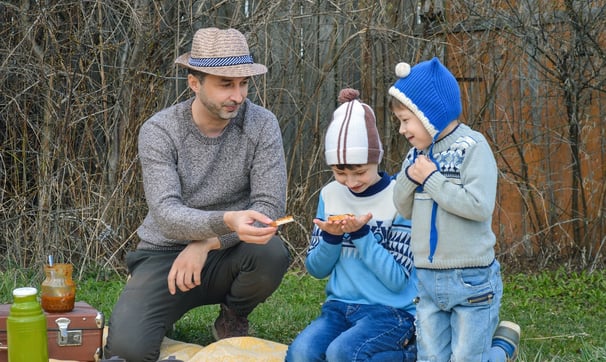Teaching Preparedness to Kids: Engaging and Fun Activities
EDUCATION


Preparedness is a crucial life skill that can make a significant difference during emergencies and unexpected situations.
As responsible adults, it is our duty to ensure that children are equipped with the knowledge and skills to handle adversity and stay safe. Teaching preparedness to kids doesn't have to be dull or intimidating; in fact, it can be engaging and enjoyable! In this blog post, we will explore some fun activities that not only educate children about preparedness but also turn the learning process into an exciting adventure.
1. Create a Preparedness Treasure Hunt
A treasure hunt is an excellent way to teach kids about preparedness while sparking their curiosity. Design clues that lead children to various locations in the house or backyard, where they will find "preparedness treasures." Each treasure can be related to a different aspect of preparedness, such as a first aid kit, flashlight, whistle, or a list of emergency contacts. As they discover each item, discuss its importance and how it can be used during emergencies.
2. Role-Play Scenarios
Children love to pretend play, so why not use it to teach preparedness? Create various emergency scenarios, such as a power outage, a fire, or getting lost in the wilderness, and encourage kids to act out how they would respond. This interactive activity helps them understand the appropriate actions to take and boosts their confidence in dealing with real-life situations.
3. Build a 72-Hour Emergency Kit
Engage kids in creating their own 72-hour emergency kit, customized to their needs and preferences. Provide them with a checklist of essential items like water bottles, non-perishable snacks, a small blanket, a flashlight, and a hygiene kit. Let them decorate their kits with stickers and personal touches. This hands-on activity not only teaches preparedness but also instills a sense of ownership and responsibility.
4. Storytelling and Drawing
Narrate stories about children who demonstrate preparedness and overcome challenges. Encourage kids to come up with their own stories and drawings showcasing how they would handle emergencies. This activity allows them to express their creativity while reinforcing the importance of being prepared.
5. Emergency Contacts and Meeting Points
Teach kids about the significance of emergency contacts and designated meeting points in case of separation during an emergency. Help them memorize important phone numbers or store them in a designated phone book. Designate meeting spots within your neighborhood or community where they can go if they ever get lost.
6. Preparedness Puzzles and Games
Create preparedness-themed puzzles, crossword puzzles, and board games to make learning fun and interactive. Incorporate questions about what to do during specific emergencies or how to use essential items like fire extinguishers or first aid supplies. By turning learning into a game, kids will be more motivated to remember and apply the information.
Conclusion
Teaching preparedness to kids should be an enjoyable and engaging experience. By using interactive and fun activities, we can ensure that children learn these vital skills effectively while fostering a sense of responsibility and self-confidence. Remember, the key is to make preparedness a regular part of their lives, allowing them to grow into proactive and resilient individuals who are always ready to face whatever challenges may come their way.
